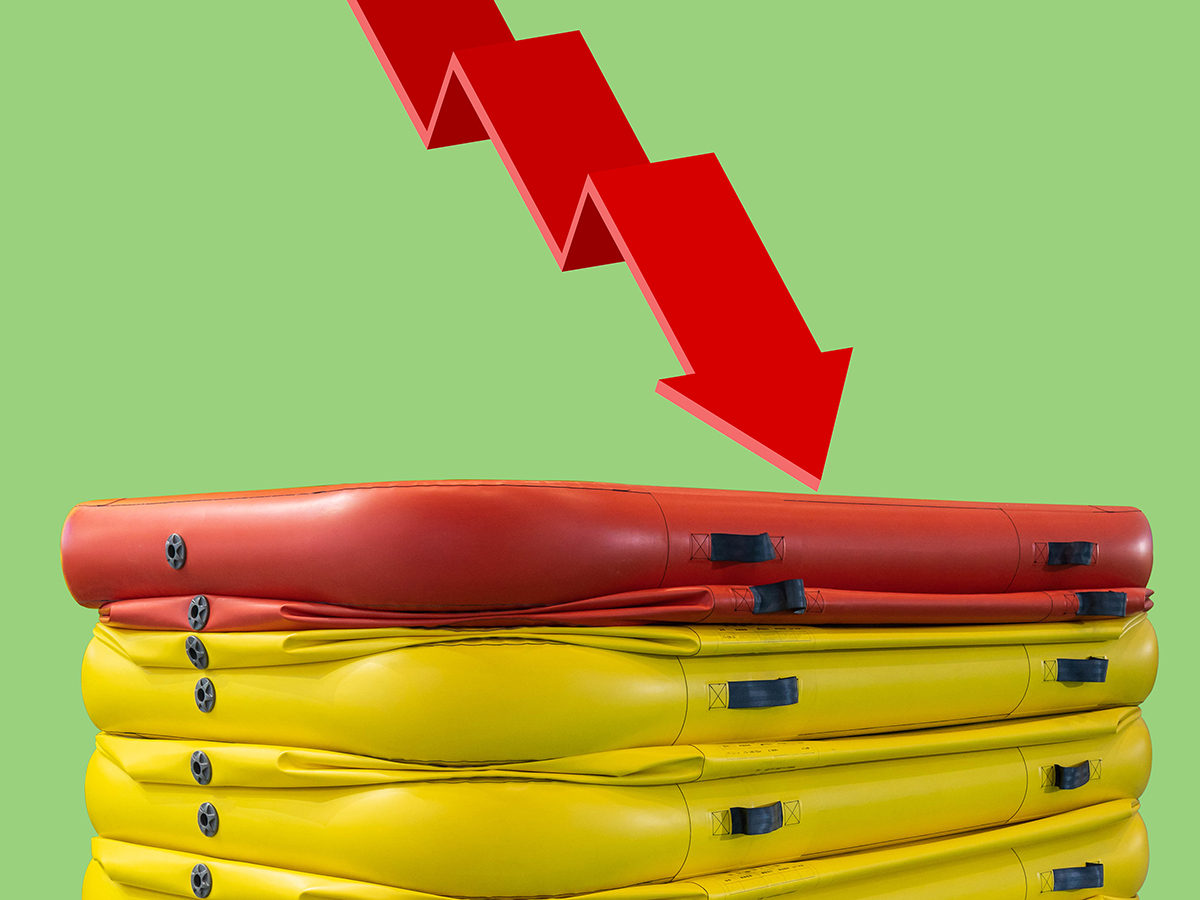Economist’s View: Why Recession or No Recession Is Not Up to the Fed
Is this what a soft landing looks like?
Over the past year, as the Federal Reserve has tightened monetary policy with an on-going round of interest rate increases, the expectation that bringing inflation down to its 2 percent target would require a recession was much discussed in the commentarial as well as in the political arena.
In the background, one could softly hear the famous line by long-serving Fed Chair William McChesney Martin that the Fed’s job was “to take away the punch bowl just as the party gets going.” His quip came in 1955 during a speech to the Investment Bankers Association. But beyond the quotable quote, there was a larger message in Martin’s remarks. That message was that Fed watchers should not oversimplify their view of Fed decision-making. The central bank, even seven decades ago, did not rely on just one or two indicators in its policy decisions. Rather, the actions of the Federal Open Markets Committee considered a broad range of economic data.
That’s as it should be.
The tendency to oversimplify is a recurrent temptation. Perhaps the most obvious example is the rule-of-thumb that a recession is “defined” as two successive quarters of GDP decline. The official arbiter of business cycles is the National Bureau of Economic Research, and more specifically its wonderfully named Business Cycle Dating Committee, which sounds like Tinder for nerds. The NBER standard for a recession is “a significant decline in economic activity that is spread across the economy and lasts more than a few months.”
Interestingly, the six factors thought to be most critical in the NBER analysis do not name GDP as such. Those factors are real personal income minus transfer payments, nonfarm payrolls, unemployment as gauged by the Bureau of Labor Statistics’ household survey, real personal consumption expenditures, sales adjusted for price fluctuations, and industrial production.
Just to take a quick review of those indicators, since last Fall the personal income measure is up nearly $450 billion and personal consumption has risen $550 billion. Over the same period, non-farm employment is up approximately 2 million jobs and unemployment has stayed below 4 percent. In real (inflation-adjusted) terms goods and services consumption is up 2.1 percent year-over-year. Only in the industrial production category do we find softness, with year-over-year change a negative 4 percent.
On balance, then, the momentum of the economy has been largely forward, even with tighter monetary policy in place. So, progress on the Fed’s primary objective—lower inflation—has been positive, even if the putative “causal factors” haven’t slowed as many expected. The Consumer Price Index headline number is now close to 3 percent, down from a peak of nearly 9 percent last summer. Could it be that a rare ‘soft landing’ is happening? The odds seem to be much better than virtually anyone expected 12 months ago.
But why? Why have economists’ expectations proven (thus far) excessively pessimistic? Why has the economy proven more resilient than anticipated? And what are the implications for commercial property performance?
Old Rules Don’t Apply
As I discussed in my June column for CPE, the surprises for economists have been in many ways the results of the way econometric models work. Such models almost universally assume linear relationships (not straight-lined necessarily, but fundamentally continuous relationships) that are ill-suited to major disruptions like the pandemic, which are “non-linear” events. Such models are, at bottom, deterministic or mechanistic in structure, even if couched in the mathematics of probability. They are based on a view of homo economicus that predicates behavior on “rational choices,” but in a sadly limited sense of immediate and measurable trade-offs.
It is, in some ways, a checkers-player’s approach when both individuals and businesses can and do encompass a more complex, chess-like approach to important decisions. Assumptions based on a cause-and-effect direct relationship between, say, the yield curve or the Phillips curve, are examples of the danger of oversimplifying the complex adaptive system that is the economy.
But what have we seen instead? Remembering the disasters of early downturns, forward-thinking investors realized that an inverted yield curve—with long-term yield rates lower than short-term rates—presented an opportunity to shield themselves from rapid upward adjustments by the Fed. Either by shifting their debt strategy directly, by reweighing their capital structure toward 5-, 7-, or 10-year debt, or by using derivatives as hedges, such investors mitigated their exposure to an aggressive FOMC.
In the labor markets, meanwhile, the efficacy of the Phillips curve trade-off (cutting inflation by increasing joblessness) was diluted, if not foiled, by workers taking advantage of the information revealed in the monthly JOLTS (Job Openings and Labor Turnover Survey) showing surpluses shifting bargaining power to workers. That imbalance in labor bargaining power also took the form of “quiet quitting” in enough cases to matter statistically. Neither employers nor workers felt that the pressure of Fed policy was coercively driving the nation into the either/or choice of inflation versus jobs.
If we have missed the mark in anticipating macro-economic behaviors, it is altogether possible that the now-popular assumptions about an “urban doom loop” confronting commercial real estate markets may also prove too shallow analytically and too confident in expectation. The notion that the remainder of this decade will entail a break in the long-established vector favoring America’s leading cities, and the metastasis of workers’ pandemic adjustments into a hollowing out of their commercial cores is, to put it conservatively, an unproven hypothesis.
Cities, I am convinced, will prove resilient for the fundamental reason that human beings are resilient. As for real estate markets, well, we would be smart to pay attention to the aphorism variously attributed to J.P. Morgan or John D. Rockefeller. When asked what the market would do, those giants of finance were reported to reply: “It will fluctuate.”










You must be logged in to post a comment.